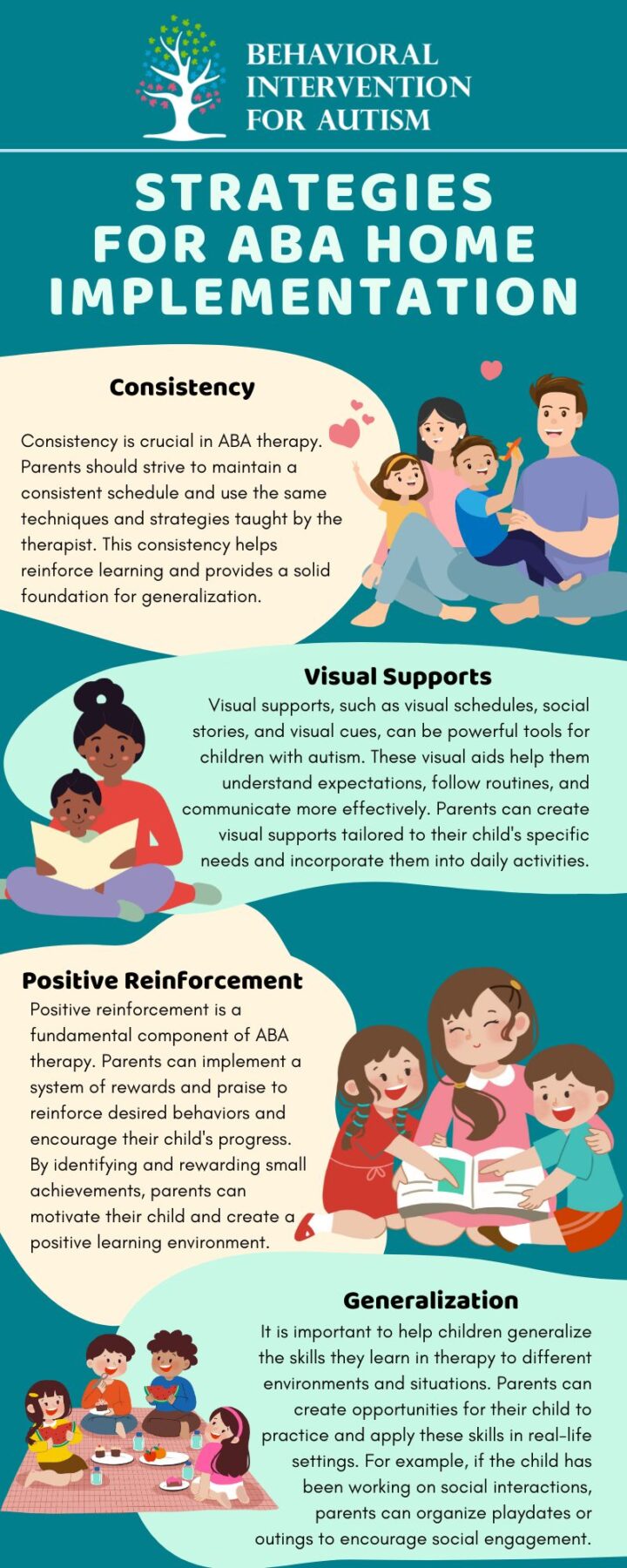
Applied Behavior Analysis (ABA) therapy has been widely recognized as an effective treatment for autism, and starting ABA therapy at an early age offers numerous benefits. This article explores the importance of early intervention and the long-term effects of early in-home ABA therapy.
Importance of Early Intervention
Research consistently shows that starting ABA therapy as early as possible can greatly benefit children with autism. Most children begin ABA treatment between the ages of 2 and 6 years old, with starting at age 2 being optimal for developing communication skills, following directions, and preparing for preschool.
By intervening early, children with autism have the opportunity to learn and acquire essential skills during their critical developmental years. ABA therapy focuses on teaching individuals with autism how to effectively communicate, develop social skills, manage challenging behaviors, and enhance their overall quality of life.
Long-Term Effects of Early ABA
The goal of early ABA therapy is to equip individuals with the necessary tools and strategies to navigate the challenges associated with autism and promote independence.
A study conducted using the Early Start Denver Model, an intervention combining ABA teaching methods with developmental ‘relationship-based’ approaches, showed significant improvements in children with autism between the ages of 18 to 30 months. The intervention involved parents and trained therapists working collaboratively to improve the children’s social interactions, play, and communication skills.
Early autism diagnosis and interventions are more likely to have major long-term positive effects on symptoms and later skills. With early intervention, some children with autism can make significant progress to the extent that they are no longer on the autism spectrum when they are older.
By starting ABA therapy early, children have more time to benefit from the intensive interventions provided. This can lead to improvements in various areas, including language development, social skills, self-care abilities, and cognitive functioning. Early ABA therapy sets a strong foundation for future growth and development, paving the way for better long-term outcomes.
It’s important to note that each state in the U.S. has its early intervention program, specified by Part C of the Individuals with Disabilities Education Improvement Act (2004). These programs aim to help children with autism gain basic skills typically learned in the first two years of life. Emphasizing the importance of early interventions, these programs provide services for children from birth to age 2 years who are diagnosed with developmental delays or disabilities, including autism.
Starting ABA therapy at a young age allows children to receive the support and guidance needed to improve their communication, social interactions, and overall well-being. Research and guidelines emphasize the importance of beginning interventions as early as possible after diagnosis to maximize their impact on a child’s development and future success.
Optimal Age for Beginning ABA
Most children begin ABA therapy between the ages of 2 and 6 years old, with starting at age 2 being considered optimal. At this age, children are in a critical period of development, and ABA therapy can help them develop important skills such as communication, following directions, and preparing for preschool.
Early intervention during this period allows for targeted interventions and strategies to address the unique needs of children with autism. ABA therapy focuses on behavior modification and skill-building, helping children develop essential life skills, reduce disruptive behaviors, and improve social interactions.
Early Diagnosis and Interventions
Initiating interventions at an early age allows professionals to work closely with the child and their family to develop individualized treatment plans. These interventions may include ABA therapy, speech therapy, occupational therapy, and other evidence-based approaches. The goal is to provide children with the best start possible and maximize their potential for learning and progress.
Recent guidelines recommend starting integrated behavioral and developmentalinterventions as soon as autism is diagnosed. Research shows that early intervention is key to maximizing outcomes for children with autism. The sooner a child receives help, the greater the chance for learning and progress.
Starting interventions early allows for focused support during a critical period of brain development, which can lead to better long-term effectiveness in treatments. Early diagnosis and interventions are more likely to have major positive effects on autism symptoms and later skills.
Parental Involvement in ABA
When it comes to ABA therapy, parental involvement plays a critical role in maximizing the benefits for children with autism. A collaborative approach between therapists and parents is essential for the success of the therapy. In this section, we will explore the importance of a collaborative approach and the strategies for implementing ABA techniques at home.
The success of ABA therapy greatly relies on collaboration between parents and therapists. Parents are integral members of the therapy team, as they have a unique understanding of their child’s needs, preferences, and challenges. By working closely with therapists, parents can actively contribute to their child’s progress and ensure the consistency of interventions across different settings.
By actively participating in therapy sessions and implementing strategies at home, parents can reinforce the skills learned during therapy and help their child generalize those skills to everyday life.
Strategies for Home Implementation
Implementing ABA techniques at home can significantly enhance the effectiveness of therapy and support the progress of children with autism. Here are some strategies that parents can incorporate into their daily routines:
By actively participating in ABA therapy and implementing strategies at home, parents can support their child’s progress and promote the generalization of skills. The collaborative approach between therapists and parents ensures a consistent and comprehensive intervention, maximizing the benefits of ABA therapy for children with autism.
Sources:
https://www.chop.edu/health-resources/applied-behavior-analysis-aba-children-autism
https://www.nichd.nih.gov/health/topics/autism/conditioninfo/treatments/early-intervention
- Signs of an Autistic Child at Age Two - April 11, 2024
- Can Trauma Cause Autism? - April 11, 2024
- Can an Autistic Child Go to Normal School? - April 11, 2024



